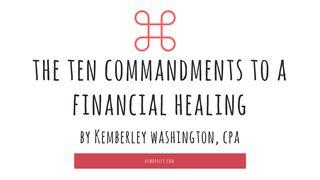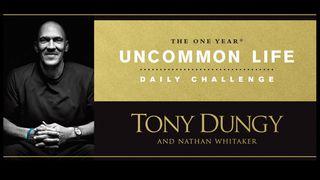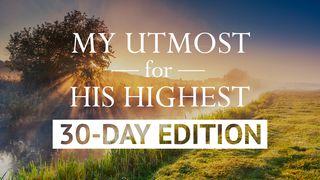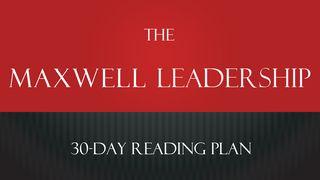Celebration through Stewardship: A 14 Day JourneySample

Reconciling the Symbols
Christian environmental educators Loren and Mary Ruth Wilkinson reflect on two important symbols:
The most powerful symbol in our time is the picture of the earth from space ... But for many today, that image of the planet seems to hold their hope of wholeness. Individual life, they say, is meaningless; what counts is the health of our planet...
Christians too are moved by these pictures of our planet, but are not convinced that or only hope is in the planet's health ...Our hope is centered on another symbol, the cross. The cross expresses God's good news to men and women.
Is the cross good news for the rest of creations as well? Can the two symbols--of the earth (a circle) and the cross--be reconciled? Can there be such a thing as a "Christian environmentalist?" We are convinced the answer to these questions is yes ... But first we need to think a little more about what is implied by these two symbols, circle and cross, and the relationships and tensions between them...
The earth is round, and it is full of cycles. Living things die and rot into soil, which nourishes more living things. Rain falls on mountains, where it drains into rivers, which flow into the sea, which evaporates into clouds, which carry rain again to the mountains. The carbon dioxide we exhale is taken in by plants, which expire oxygen, which we inhale and then exhale as carbon dioxide. For all these cycles the circle is a good symbol.
Christian thinking is centered on the cross. Geometrically, the cross is the intersection of two straight lines, a horizontal and a vertical. Instead of one line, turning again and again in a circle, the Christian sees that the earth is not eternal. For another line intersects ours from the outside. The cross refers to the place where God's perspective has intersected ours most clearly. The execution of one man at a particular place and time is the midpoint, the crux: the intersection of eternal and temporal, God's time and ours.
Many environmentalists are understandably suspicious of this Christian view of time and of the Christian conviction that there is another reality intersecting ours. They say that it has made Christians other-worldly, neglectful of the needs of the earth, too likely to use the earth only as a backdrop for the human drama of eternal salvation...
The biblical view recognizes the reality of the cycles of nature...
We are not satisfied with the cycles. For all the beauty of the earth and its circling life, it does not bring its own meaning with it...
Creation itself is neither meaningless nor empty, but it lacks a center: the center provided by recognizing that creation is not just "nature" or "resources" or "the environment." The writer of Ecclesiastes both concludes and answers his lament with words particularly well-suited for our time: "Remember your Creator."
Christian environmental educators Loren and Mary Ruth Wilkinson reflect on two important symbols:
The most powerful symbol in our time is the picture of the earth from space ... But for many today, that image of the planet seems to hold their hope of wholeness. Individual life, they say, is meaningless; what counts is the health of our planet...
Christians too are moved by these pictures of our planet, but are not convinced that or only hope is in the planet's health ...Our hope is centered on another symbol, the cross. The cross expresses God's good news to men and women.
Is the cross good news for the rest of creations as well? Can the two symbols--of the earth (a circle) and the cross--be reconciled? Can there be such a thing as a "Christian environmentalist?" We are convinced the answer to these questions is yes ... But first we need to think a little more about what is implied by these two symbols, circle and cross, and the relationships and tensions between them...
The earth is round, and it is full of cycles. Living things die and rot into soil, which nourishes more living things. Rain falls on mountains, where it drains into rivers, which flow into the sea, which evaporates into clouds, which carry rain again to the mountains. The carbon dioxide we exhale is taken in by plants, which expire oxygen, which we inhale and then exhale as carbon dioxide. For all these cycles the circle is a good symbol.
Christian thinking is centered on the cross. Geometrically, the cross is the intersection of two straight lines, a horizontal and a vertical. Instead of one line, turning again and again in a circle, the Christian sees that the earth is not eternal. For another line intersects ours from the outside. The cross refers to the place where God's perspective has intersected ours most clearly. The execution of one man at a particular place and time is the midpoint, the crux: the intersection of eternal and temporal, God's time and ours.
Many environmentalists are understandably suspicious of this Christian view of time and of the Christian conviction that there is another reality intersecting ours. They say that it has made Christians other-worldly, neglectful of the needs of the earth, too likely to use the earth only as a backdrop for the human drama of eternal salvation...
The biblical view recognizes the reality of the cycles of nature...
We are not satisfied with the cycles. For all the beauty of the earth and its circling life, it does not bring its own meaning with it...
Creation itself is neither meaningless nor empty, but it lacks a center: the center provided by recognizing that creation is not just "nature" or "resources" or "the environment." The writer of Ecclesiastes both concludes and answers his lament with words particularly well-suited for our time: "Remember your Creator."
Scripture
About this Plan

The words celebration and stewardship are rarely connected. Perhaps that’s because we tend to think about stewardship as giving away rather than caring for—or even enjoying. Through this plan’s daily Bible passage and devotional content, you’ll begin to understand how intentional stewardship springs from—and even leads to—celebration.
More
We'd like to thank The Stewardship Council, creators of the NIV Stewardship Study Bible, for the structure of Celebration through Stewardship: A 14 Day Journey. For more information about this plan, the NIV Stewardship Study Bible, or hundreds of stewardship resources, please visit their site at http://www.stewardshipcouncil.net/
Related plans

Money Matters: Devotions From Time of Grace

Dave Ramsey’s Financial Wisdom From Proverbs

The Ten Commandments To Financial Healing

The Uncommon Life Daily Challenge from Tony Dungy

God's Gift of Money: Devotions from Time of Grace

Restart: Leading with Confidence

My Utmost For His Highest

The Maxwell Leadership Reading Plan

The Message of Leadership
